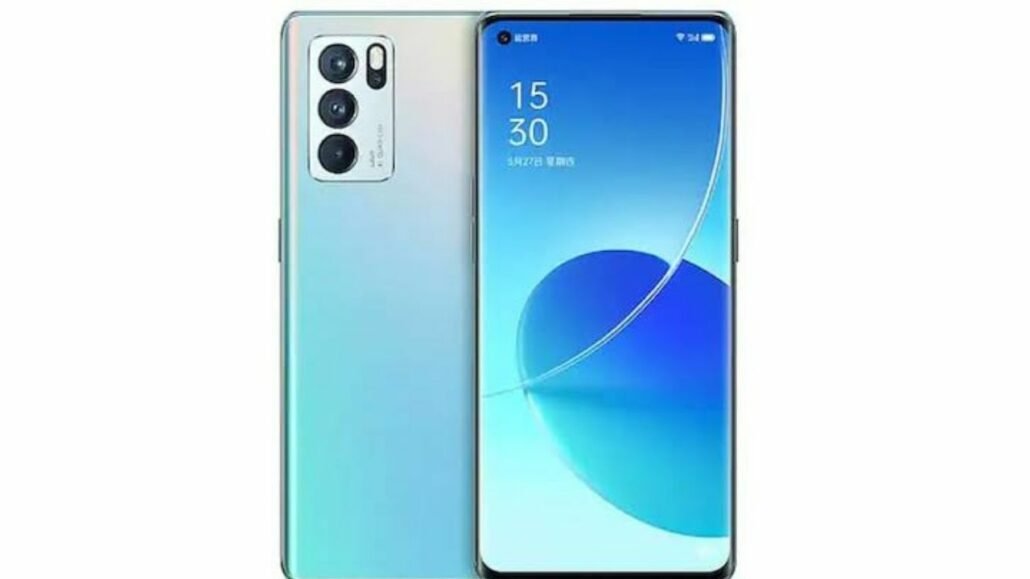Oppo Reno 6 is available, with 8GB of RAM and 128GB of storage. Is it still a good idea to go for Oppo’s phone? Recent debuts like the OnePlus Nord 2 and Poco F3 GT, all priced similarly, will put the Oppo Reno 6 up against strong competition.
The phone’s bezels are rather thin, giving it a premium appearance. Specifications and software for the Oppo Reno 6 The SoC is the second major distinction between the Oppo Reno 6 and its brother. NFC, Bluetooth 5.2, Wi-Fi 6, and all of the usual sensors and satellite navigation systems are all included in the Oppo Reno 6. The camera cluster is attractive and complements the phone’s overall design.
It also boasts a very effective in-display fingerprint sensor. This mobile is just as thin (7.59mm) as the Reno 6 Pro, but weighs 182g more. The design is the first apparent change between the Oppo Reno 6 and its Pro brother. It comes in two colors: Aurora and Stellar Black, which we originally saw on our Reno 6 Pro review unit. According to Oppo, this is India’s first phone to have the MediaTek Dimensity 900 SoC, which was released recently. This design is reminiscent of the iPhone 12, yet it appears to work in the Reno 6’s favor.
This mobile also shares several features with its predecessor which includes the camera app’s Bokeh Flare Portrait effect, 65W quick charging, and a high refresh rate AMOLED display. The Oppo Reno 6 Pro was a decent advance over its predecessor, the Reno 5 Pro, but I didn’t think the extra features were enough to warrant the price increase.
The processor has two ARM Cortex-A78 cores and six ARM Cortex-A55 cores, with an ARM Mali-G68 MC4 GPU. Reno 6 is a design by Oppo. The main camera’s close-up images showed a lot of detail and pleasant colors. If you don’t have Oppo’s fast charger, the Reno 6 also supports USB-PD and other fast charging protocols (18W). Oppo Reno 6 is a set of six cameras by Oppo. Despite the lower power than the Reno 6 Pro, the Oppo Reno 6’s SoC can handle everyday chores and games at full-HD+ quality.
The devices misses the elegant design and brute might of the Reno 6 Pro’s top MediaTek SoC, but it delivers far greater value. Like the Pro model, the Reno 6 features the Bokeh Flare Portrait filter, which is interesting to experiment with. The Reno 6 Pro has the same photography and videography functions as the Reno 6 Pro. Although this mobile does not have the rear depth camera that the Reno 6 Pro has, it has the same combination of the front and back sensors. A 64-megapixel primary camera, an 8-megapixel ultra-wide camera, a 2-megapixel macro camera, and a 32-megapixel selfie camera are among the features.
During normal use, which in my case included using social apps and viewing videos, the phone only became somewhat warm. The battery life is also excellent; it charges quickly with 4300mAh battery capacity, the display is bright, and the cameras are excellent for still photography. I think the new appearance is more quality, and this phone should be capable of running most apps and games.
During multitasking, I observed no lags, and the 90Hz refresh rate allowed seamless scrolling in menus and programs. The recorded movies might be better, stereo speakers are lacking, and ColorOS may be a spammy nightmare. The Reno 6 may be tempted away by the latter two phones, which offer more features and more powerful SoCs at lower starting costs. And this is available at 29,990 INR.
